Home / Best Things to Do in Saudi Arabia: From Ancient Cities to Modern Marvels
When we think about Saudi Arabia, the first thing that comes to mind is often the pilgrimage to Mecca, Medina, and the sacred places we’ve all heard about. But there’s so much more waiting for us beyond that. The country has opened its doors wide to travellers, showcasing its mix of wonders, marvels, and natural beauty.
Saudi Arabia is like a book filled with many chapters. Some pages discuss history, others shine with religion, and others sparkle with modern progress. This guide is here to help you uncover the most unforgettable things to do in Saudi Arabia, understand what each destination means, and make your first getaway to the Kingdom truly special.
From ancient sites to stunning deserts and modern cities, there are countless things to do in Saudi Arabia. Whether you visit for culture, faith, or adventure, every experience connects the country’s rich past with its modern life, and that story begins with its remarkable landmarks and historical highlights.
Here’s what you need to visit for sure.

If we had to name the heart of Islam, this is it. The Grand Mosque, known as Masjid al-Haram, is the most sacred place for Muslims. At its centre stands the Kaaba, which Muslims worldwide face during their prayers. Millions come here every year for the Hajj or Umrah journey, both of which are special acts of worship. Standing in this mosque feels peaceful, humbling, and emotional.
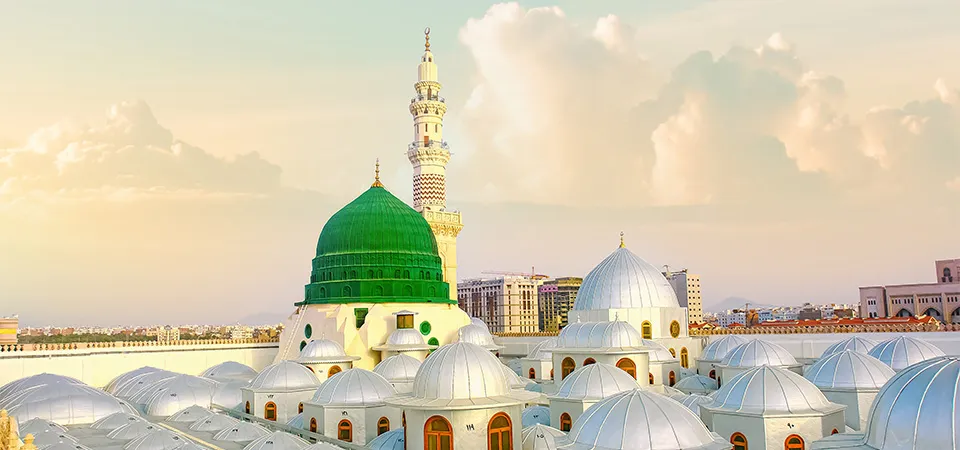
Next, we find ourselves in Medina, at the Prophet’s Mosque: Masjid an-Nabawi. This is where the Prophet Muhammad (peace be upon him) lived, taught, and was laid to rest. The Green Dome above his resting place is one of the most famous sights in Islam.
Though visiting it isn’t part of the pilgrimage rituals, everyone who comes for Hajj or Umrah also wants to go here. The mosque feels calm and full of history. It’s a place where we reflect on the Prophet’s life and how his teachings have changed the world.

Just outside Riyadh lies Diriyah, a town built from mud-brick walls that whisper stories from the past. This is where the first Saudi state began. Walking through its narrow streets, we see traditional Najdi architecture, which is characterised by flat rooftops, thick clay walls, and doors that appear to be handcrafted centuries ago.
There are also restaurants, museums, and walkways that blend history with modern comfort.
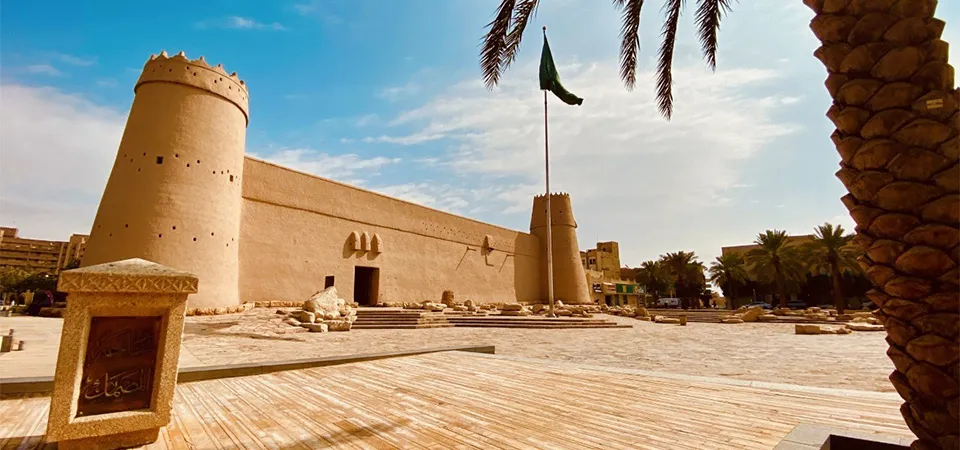
In the heart of Riyadh stands Masmak Fortress. Built in the 1800s, this small yet mighty building holds stories of courage and unity. Inside, a museum shows how Riyadh transformed from a quiet desert town to a modern powerhouse. It’s the kind of place that helps us understand the people behind the nation’s rise. For first-time visitors, it provides context before exploring the city’s skyscrapers and glowing streets.

The Kingdom Centre Tower rises high into the Riyadh skyline. It’s a symbol of how fast Saudi Arabia has grown. At the very top is a sky bridge that gives the best view of the city, especially at sunset when the lights begin to glow. Visiting this tower feels like looking at the country’s future: sleek, ambitious, and full of life. From up there, we can see how Riyadh blends tradition with modern innovation.
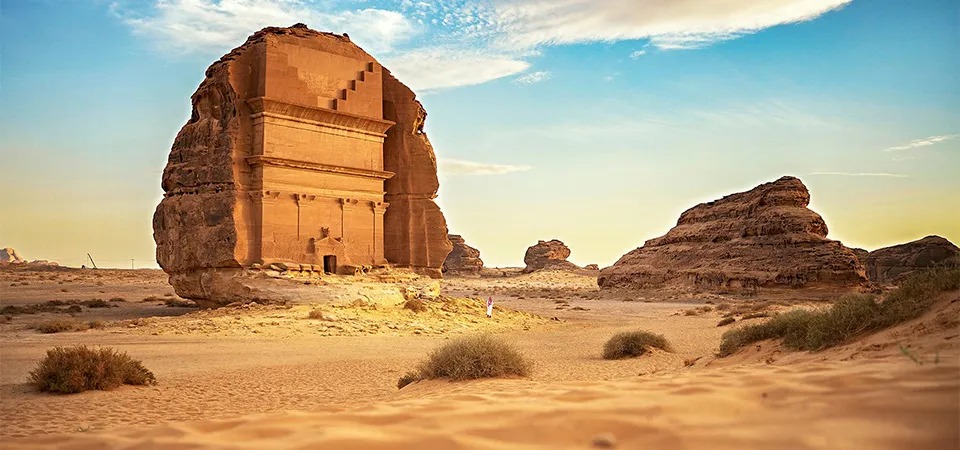
Up north, we reach Al-Ula, which is one of the most magical spots in the country. It’s known for its desert valleys, rock formations, and ancient tombs carved into cliffs. The most famous site here is Hegra, also called Mada’in Salih. Their art and architecture remain in the sandstone rocks.
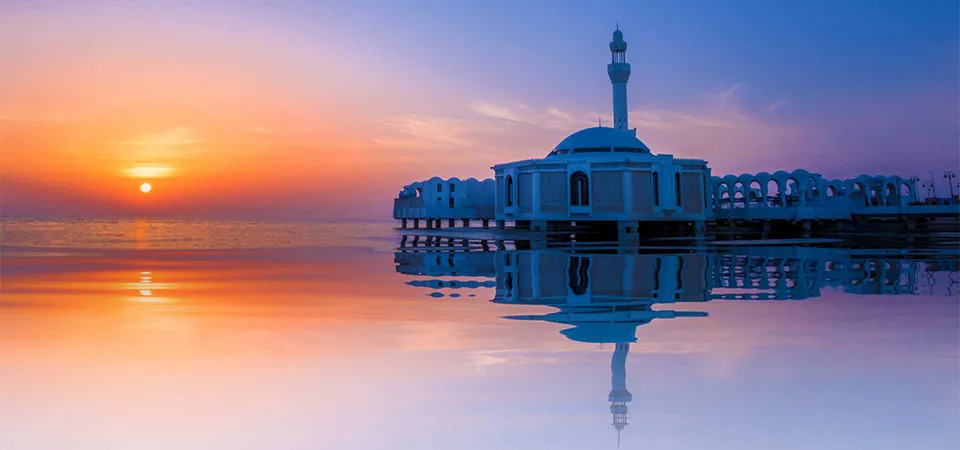
By the Red Sea, Jeddah’s Corniche is a long, peaceful walkway lined with palm trees, sculptures, and cafes. It’s the perfect place to breathe in the ocean air after exploring city life. One of its most famous landmarks is the Floating Mosque, situated directly on the sea. When the tide rises, the mosque looks like it’s sitting on the water.

About 90 kilometres from Riyadh lies one of the country’s most breathtaking natural landmarks, the Edge of the World. It’s a series of tall cliffs that overlook vast, empty plains that seem to go on forever. The wind is strong, the silence is deep, and the view stretches beyond imagination. Just have to remember to go with a guide, carry enough water, and treat this fragile place with care.
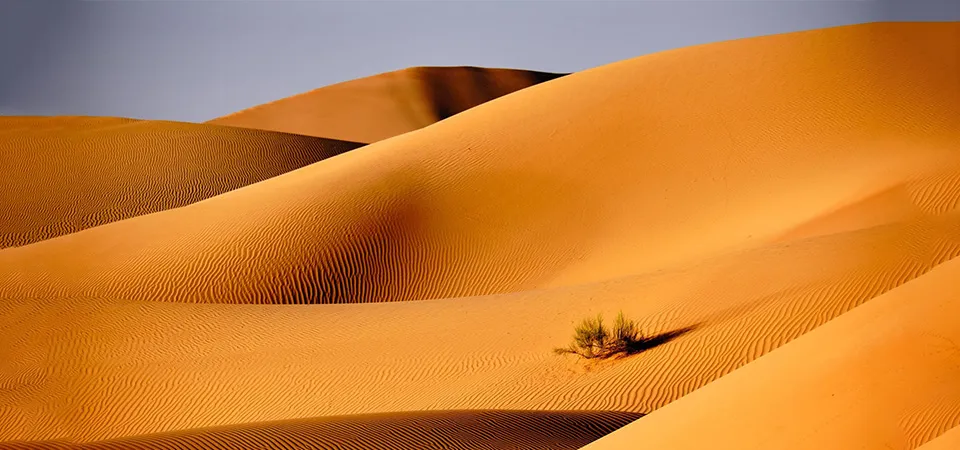
This is the largest continuous sand desert on Earth. The dunes here are massive, and some are taller than buildings! It’s silent, vast, and golden, perfect for desert safaris, camel rides, or sandboarding.

Far in the southwest, Asir National Park is lush with greenery, cool air, and stunning mountain views. It’s home to many birds and plants not found elsewhere in the country. Visitors can hike, camp, or visit Al-Soudah village to experience the local mountain life firsthand. Nature here reminds us that Saudi Arabia is more than just heat and sand.
Culture in Saudi Arabia is about people and their warmth.
Saudi coffee, called qahwa, is light, spiced, and always served with dates. It’s how hosts welcome guests. Sharing coffee means sharing respect and friendship.
Souks are traditional markets where we can feel the real rhythm of local life. In Riyadh’s Souk Al Zal, you can find perfumes, old coins, spices, and carpets. Jeddah’s Souk Al Alawi is another favourite as it is a maze of narrow alleys with vendors calling out their best deals. The best part? Bargaining is expected. What to buy:
Modern malls, such as Riyadh’s Kingdom Centre Mall and Red Sea Mall in Jeddah, also blend luxury with local brands, so whether we prefer modern shopping or traditional markets.
Every dish has flavour, warmth, and a sense of home.
You must follow etiquette here. They include dressing modestly in public and always greeting politely and accepting hospitality when offered. Moreover, during prayer times, many shops close briefly, so plan your activities accordingly.
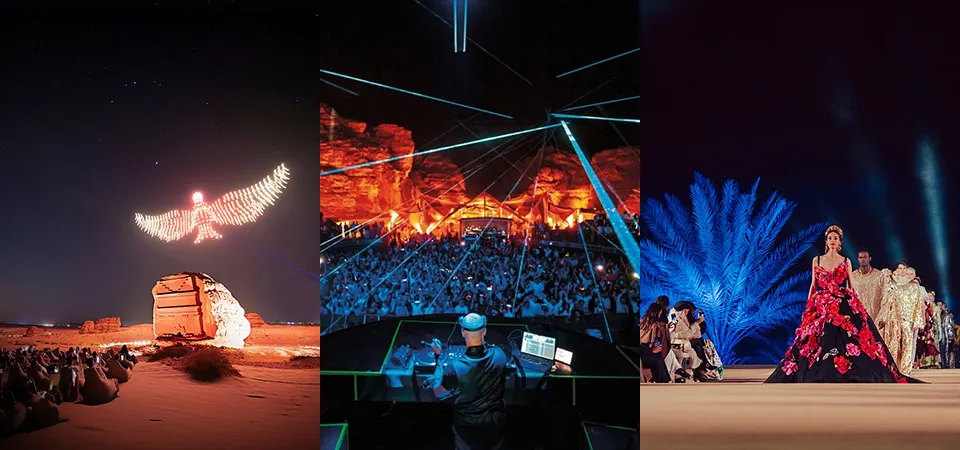
Throughout the year, AlUla hosts various events, including open-air concerts, light shows, and heritage walks, all set amidst the rocks and tombs. These events blend history with creativity, making it feel as though the past is alive again.

Every September 23, the whole country lights up green, which is the colour of the flag. There are fireworks, parades, and patriotic songs playing everywhere. It’s a day full of pride and unity, showing how far the nation has come.
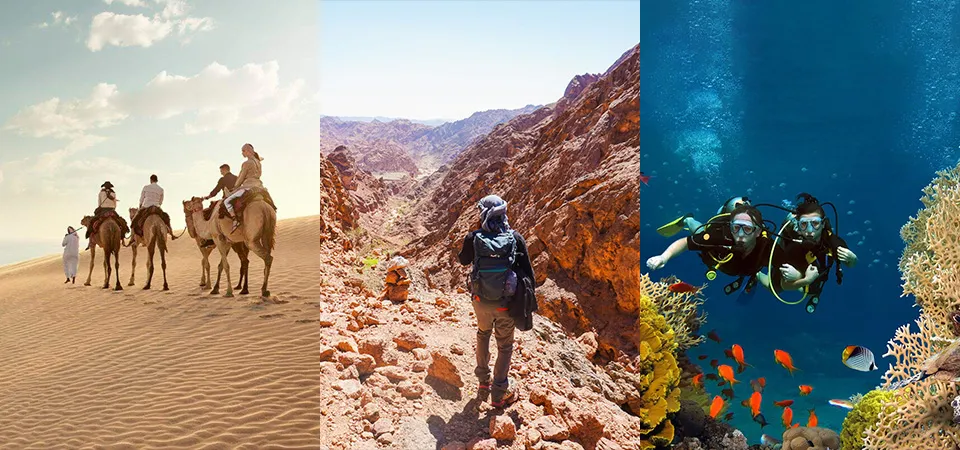
Saudi Arabia is a safe, scenic, and diverse destination, offering a range of activities that cater to all preferences, from serene to thrilling. To experience the spirit of adventure, exploring outdoor activities in Saudi Arabia is essential.

We all want a trip that runs smoothly. Here’s what helps when visiting Saudi Arabia for the first time:
Ride-hailing apps, such as Uber and Careem, are widely used. Moreover, domestic flights connect cities such as Riyadh, Jeddah, Medina, and Abha, and car rentals are readily available and affordable, making them ideal for road trips.
The local currency is the Saudi Riyal (SAR), so keep some cash for markets or smaller towns.
Saudi Arabia is very safe for travellers.
Saudi Arabia is an experience that you can share with others. From the quiet prayers in Mecca to the laughter at the Corniche, every moment feels different but connected. This guide is more than directions as it’s a friend showing you where to start, what to feel, and how to make memories that last.
So, whether you’re exploring ancient heritage, modern cities, or natural beauty, discovering the best things to do in Saudi Arabia will leave you inspired and excited to return.
Some of the most popular things to do in Saudi Arabia include visiting Al-Ula’s ancient sites, walking along Jeddah’s Corniche, exploring Diriyah’s heritage, and going on desert adventures near Riyadh.
Yes. Cities like Riyadh and Jeddah have modern systems, and locals are friendly and helpful.
Yes, they can. Women can drive, travel freely, and book hotels without guardianship. Many solo female travellers say they feel respected and safe here.
Women should dress modestly, respect local customs, and they can travel or explore freely. Locals are kind and welcoming to visitors.
Modest clothing works best. For men, long pants and T-shirts or shirts are recommended. For women, loose clothes and an abaya are required when visiting traditional areas or mosques. No need to cover the head unless entering a mosque.
Domestic flights are quick and affordable. The new high-speed train connects Mecca, Medina, and Jeddah, making travel faster than ever.
Fast and reliable. Saudi Arabia has strong 4G and 5G networks almost everywhere. SIM cards are easily available at airports.
Most restaurants offer vegetarian options, including rice, salads, hummus, falafel, and grilled vegetables. Even big cities have international vegan-friendly cafes.
A simple “Salam Alaikum” (peace be upon you) goes a long way. People often shake hands or place a hand on the heart to show respect.
A desert night under the stars. Whether near Al-Ula or the Empty Quarter, it’s a peaceful, beautiful, and unforgettable experience.